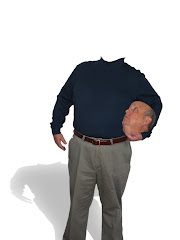Since pianists seldom play by themselves, I thought it would be useful to bring us piano players up to speed on other musical instruments -- how they work, what their characteristics are, and so on. So from time to time I'll include an article about every kind of instrument from autoharps to zitthers. We'll begin with
accordions.
There are many different styles of accordions with different key-note systems. To know which type of accordion to buy, it is necessary to have knowledge about the various types and how they work. Here is a list of the main common types of accordions and their details.
Diatonic Accordions
This is the most popular type of accordion worldwide. The earliest diatonic accordions had one row of ten buttons, each controlling a valve which in turn regulated the air flow to a pair of metal reeds inside the accordion. These ten pairs of reeds were tuned to a diatonic scale. You can get 2 different notes with every button. When the bellows are pulled open, one note plays; whereas when the bellows are pushed closed, reversing the air flow through the reeds, a different note sounds.
Diatonic accordions are easy to use, lightweight, and have a great sound quality. These are perfect for folk and dance tunes.
Chromatic Accordions
The reeds of a three row Diatonic were rearranged to form the chromatic accordion. This accordion can play a 46 note chromatic scale. The Chromatic Button Accordion is best for playing the maximum range of treble notes of any type of accordion. These are available in a range of ones with 20 treble keys and 12 bass buttons, to ones which have up to 6 rows of treble buttons and 160 bass buttons.
The two most common layouts in the chromatic keyboard are the B and C systems. The B system is superior for technically difficult works, whereas the C system is ideal for playing chords and melodic music. The bass system also performance of serious classical or modern-day works.
Piano Accordions
These have a piano type keyboard and can play most piano music. The piano accordions are the most popular type of accordion used in the US. With the development of the Stradella bass system, this accordion was the first standardized accordion. Thus a piano accordionist can play any kind of piano accordion without a change in system. Piano accordions are generally of 12 bass, 20 key up to 160 bass, and 45 key, although there are smaller and larger ones too. The piano accordion has a huge range of notes and sounds.
Thus the most common and oft used type of accordion is the piano accordion (in the US).
Two things to keep in mind when buying an accordion:
• The lighter the accordion, the better.
• Generally speaking, avoid buying a used accordion as with use they tend to need more repair and are not as great performing as newer ones. But if you can't quite afford a new one, just make sure the used on is in good working order.
 Leger lines (also written as ledger lines) are notation devices used to show notes that are too high or too low for the regular lines of a musical staff. A staff consists of five lines a four spaces, each of which correspond to a specific note. But notes that don't fall within those nine areas must go somewhere, so extra leger lines are drawn above or below the original staff to accommodate these notes. When learning to read music, young students often learn to recognize middle C early and quickly by its place on a leger line; it's represented by a leger line one place below E, which is the bottom line of a treble clef staff.
Leger lines (also written as ledger lines) are notation devices used to show notes that are too high or too low for the regular lines of a musical staff. A staff consists of five lines a four spaces, each of which correspond to a specific note. But notes that don't fall within those nine areas must go somewhere, so extra leger lines are drawn above or below the original staff to accommodate these notes. When learning to read music, young students often learn to recognize middle C early and quickly by its place on a leger line; it's represented by a leger line one place below E, which is the bottom line of a treble clef staff.








